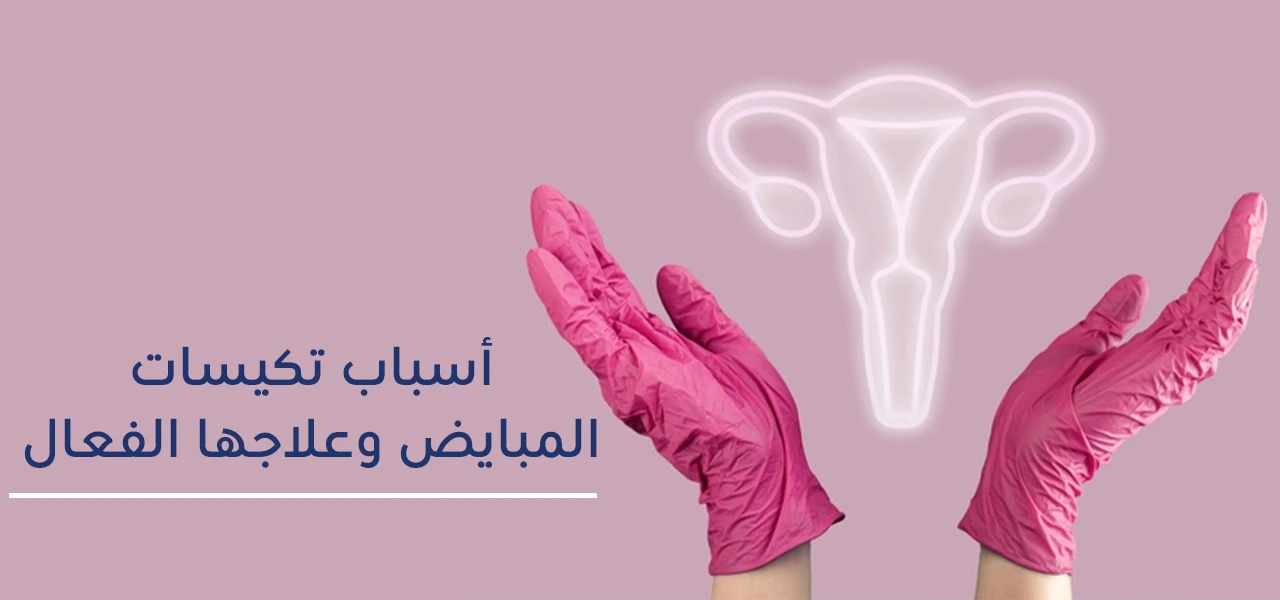Polycystic Ovary Syndrome : Causes and Treatment

Polycystic ovary syndrome affects females of all ages. Learn its main causes, symptoms like period pain, and treatment options in this article.
Symptoms of polycystic ovary syndrome
Symptoms of polycystic ovary syndrome often appear in girls during adolescence, or at the beginning of the age of twenty. These symptoms may vary from one woman to another in severity depending on the degree of cyst present in the ovary, or if the cyst is associated with polycystic ovary syndrome, and the following are the most important: Symptoms resulting from ovarian cysts:
- Irregularity in the menstrual cycle in women, or lack of menstruation.
- Obvious weight gain.
- Hair loss and weakness.
- Increased oiliness of the skin and the presence of pimples and pimples on the face.
- Excessive hair growth in the face and chest area or in the back and buttocks is called hirsutism.
- Difficulty getting pregnant or inability to ovulate.
How to treat polycystic ovary syndrome?
Many treatments are used to treat polycystic ovary syndrome. Some women use natural treatments such as herbs. Experiments have shown that using natural herbs is also an effective solution to this problem. One of the most important and common of these herbs is marjoram, which is recommended by many. From doctors.
Many medications are used to treat ovarian cysts and that the doctor prescribes to the patient, such as:
Yasmine pills work on the following:
Stimulating the ability to have menstrual flow in the body.
- The ability to restore hormonal balance.
- Organizing menstrual cycle schedules.
- Preventing pregnancy by increasing the density of uterine fluids and preventing egg fertilization.
Genera 21 tablets, which work on the following:
Genera tablets contain estradiol and drospirenone, which are hormones that help regulate ovulation and menstruation, and get rid of ovarian cysts.
- Regulating monthly menstrual cycles.
- Contraception “contributes to preventing ovulation and preventing fertilization at all.”
Nature's Bounty Primrose Oil 1000 mg 60 capsules works on the following:
- Promotes women's health.
- Protects nerves from damage.
- Reduces symptoms of eczema.
- Acne Treatment.
- Treatment of arthritis.
- Alleviating menstrual pain in women.
- Restore hormonal balance in the body.
The most common causes of polycystic ovary syndrome
There are many causes of polycystic ovary syndrome, which disrupt the menstrual cycle and lead to many problems in women that appear more after marriage, the most important of which are difficulty getting pregnant and the occurrence of ovulation. Among the most important of these causes we mention the following:
- The incidence of obesity is high and excessive.
- Not eating healthy foods or low-calorie rates.
- Family genetic history, as this disease is considered a hereditary disease that results from the presence of the disease in the mother, aunt, or grandmother, and so on.
- Insulin resistance in the body is significant.
- Increased levels of inflammation in the body, which is one of the most important causes of insulin resistance.
How does polycystic ovary syndrome go down?
A woman's eggs grow inside cysts, which is called polycystic ovary syndrome. This prevents ovulation from occurring and thus makes it difficult for pregnancy to occur. During the growth of the egg, it can be surrounded by a group of fluids and blood as well.
When the cyst bursts with ovulation, these fluids come out with it, but what happens is that despite the cyst bursting, it remains inside the ovary sometimes, and this condition is called a watery cyst.
In most cases, the cyst is small in size and does not cause a problem for the woman. It does not come out with the menstrual cycle, but it happens that its tissues dissolve inside the body, and it is then reabsorbed in the pelvic area in a period of about three months.
This functional cyst also develops as a result of the natural ovulation cycle that occurs monthly in women of reproductive age. These cysts are considered important at this stage, as they are responsible for the growth of eggs and are also responsible for secreting the hormones estrogen and progesterone.
The most important risk factors for ovarian cysts
Some factors pose a risk of having ovarian cysts in women, and they are as follows:
- Irregular menstrual cycle.
- Difficulty getting pregnant.
- There is a history of the development of functional cysts and their transformation into tumors.
- Menstruation at an early age.
- Hormonal imbalance.
- Obesity.
Treatment of polycystic ovary syndrome for married women
With the significant development of medicine in recent years, treating polycystic ovary syndrome has become easier than before, and there are different types of treatments that we present below:
- Types of medications that regulate insulin levels in the body, such as Yasmin pills.
- Hormonal medications that help inhibit male hormones in women in the event of a hormonal imbalance. These medications also work to reduce hair growth in the body in excess of what is normal.
- Follow a healthy diet by following up with a specialist doctor, so that weight can be controlled, which greatly affects the presence of ovarian cysts negatively.
- Surgical intervention can also be resorted to as a final solution if all pharmaceutical solutions fail to treat the problem, through which the follicular cysts located in the wall of the ovary, which prevent pregnancy and cause severe pain during the menstrual cycle, are removed.
At the end of our article, we will have learned about the causes of polycystic ovary syndrome and how to diagnose and treat it through types of effective drug treatment, which you can obtain through Spirit Pharmacy, the best online pharmacy in Kuwait.
